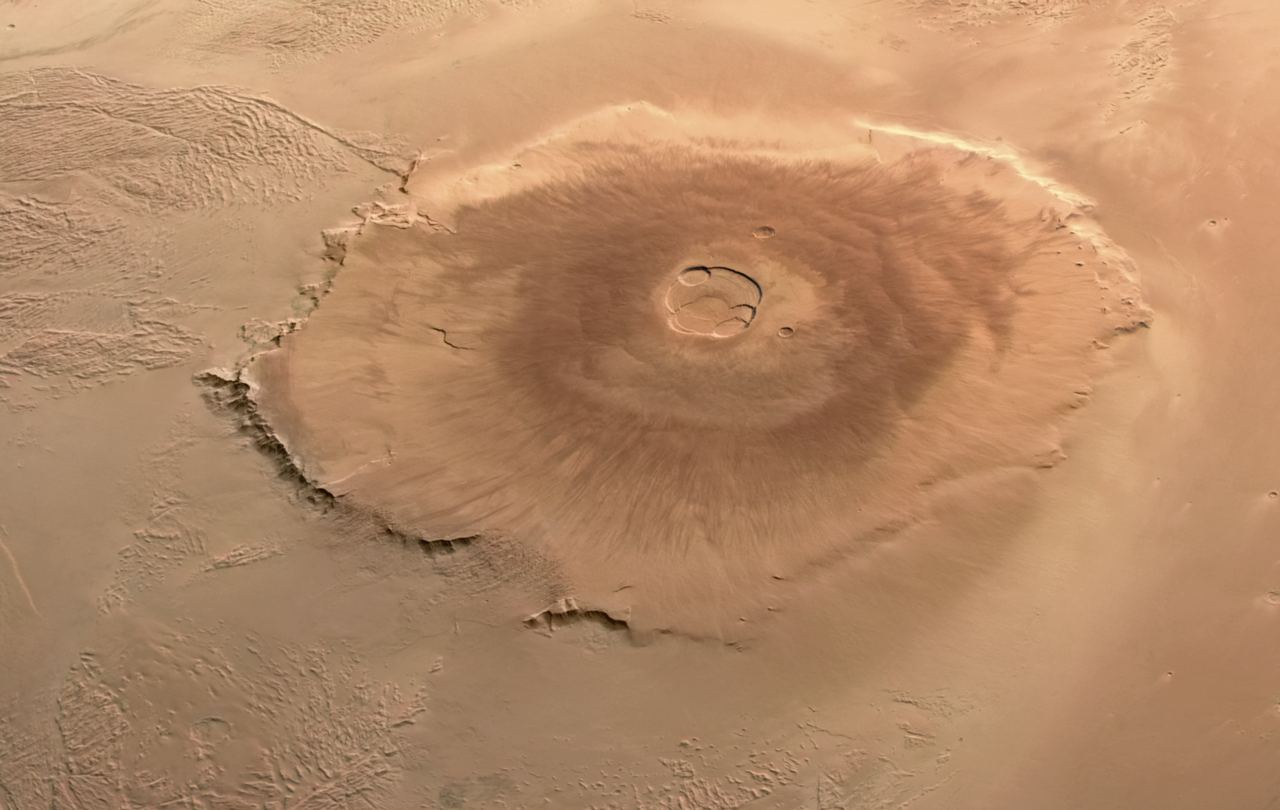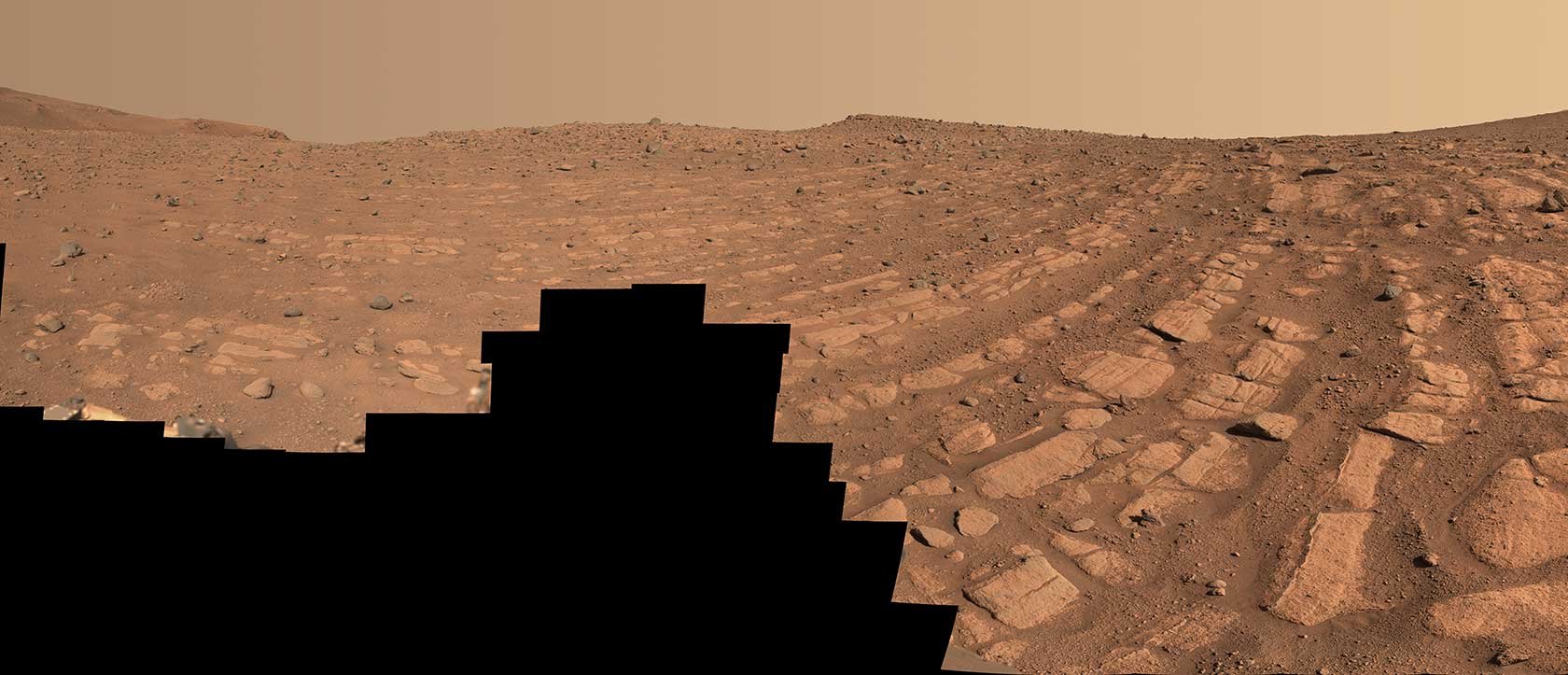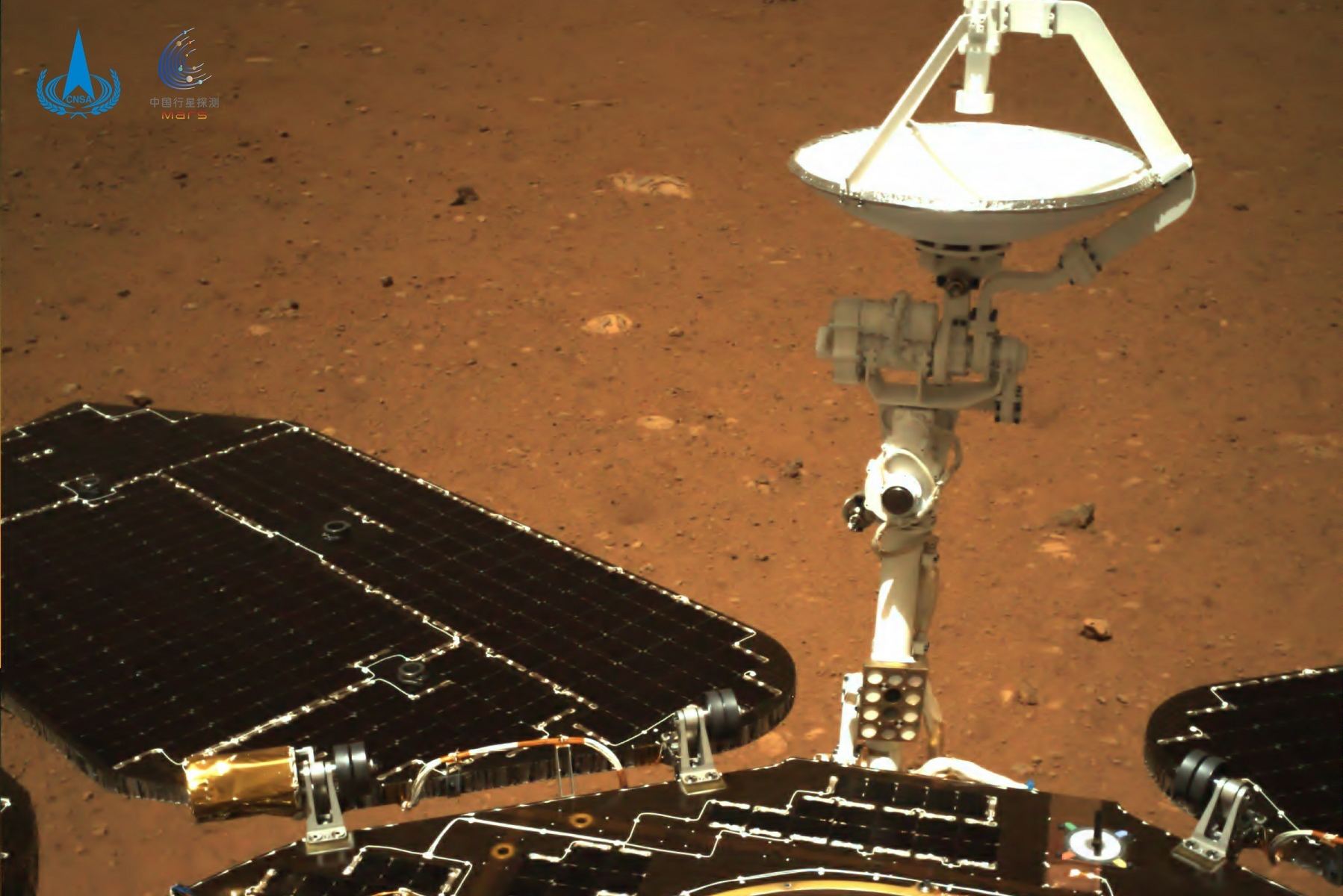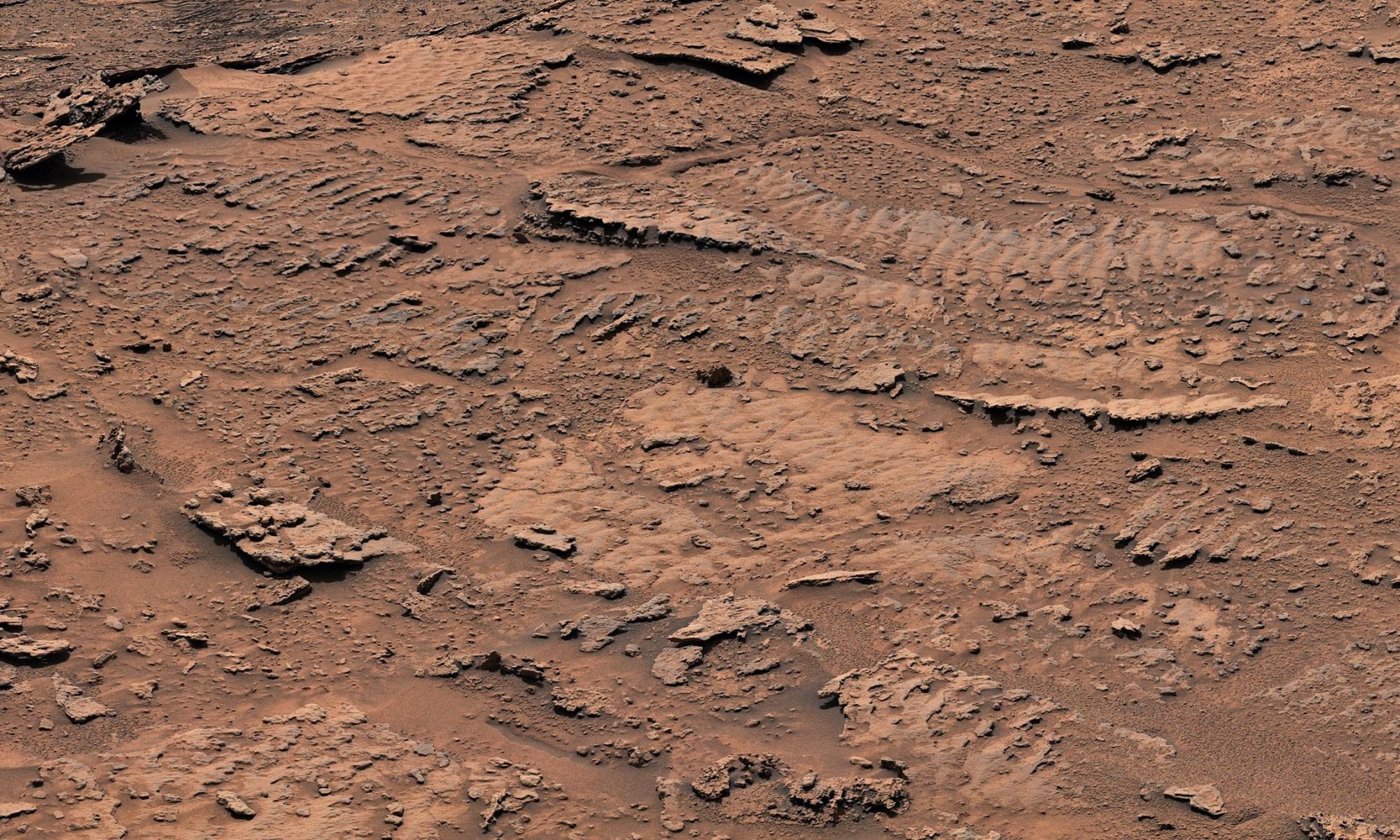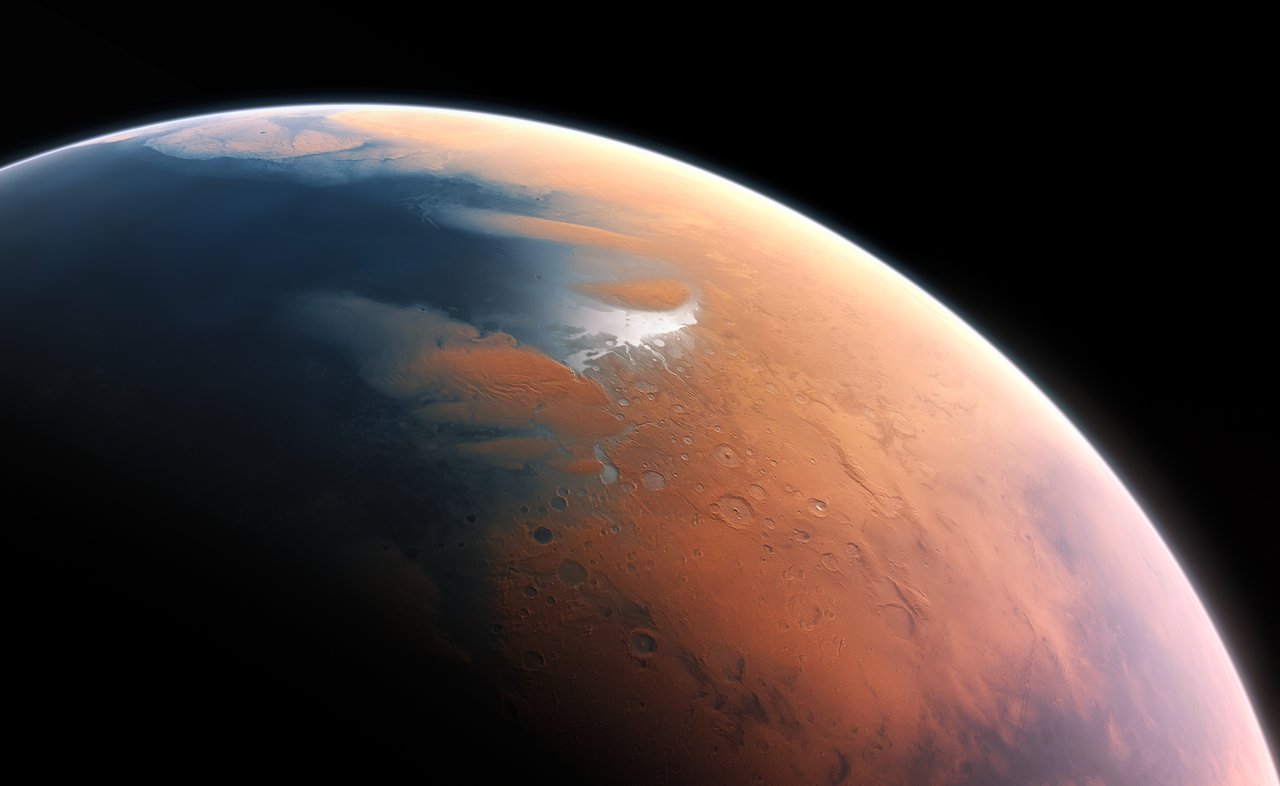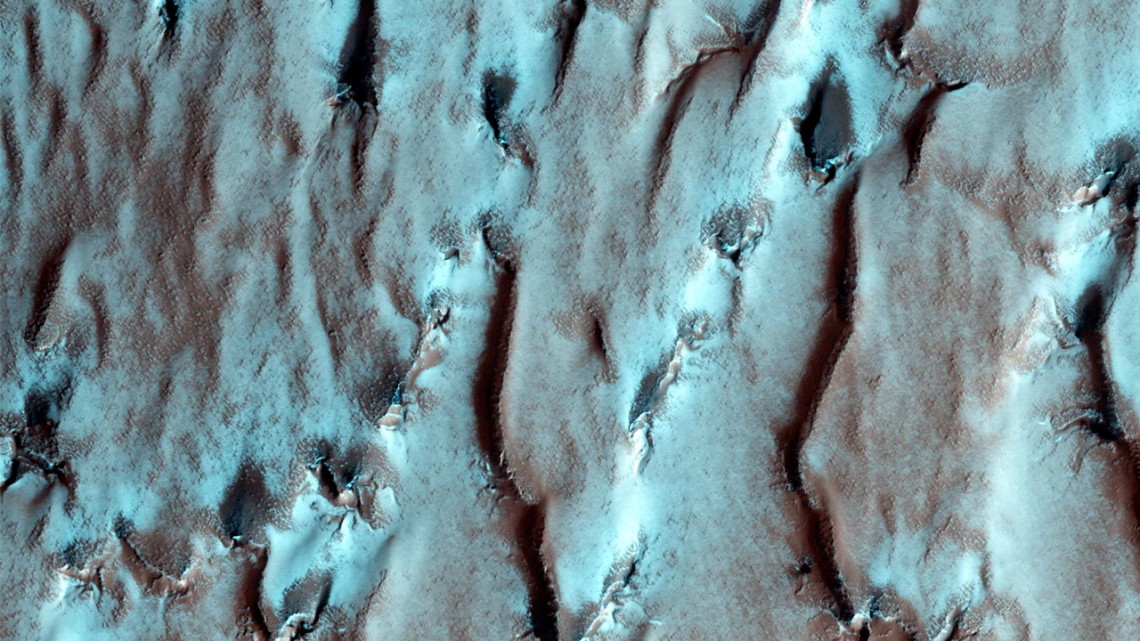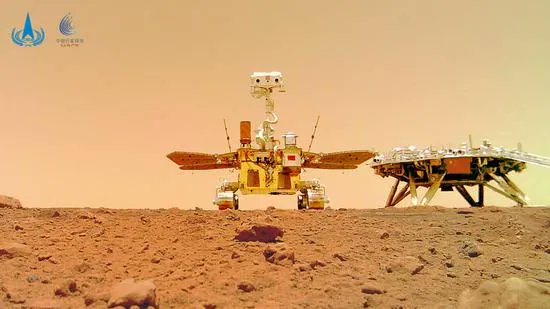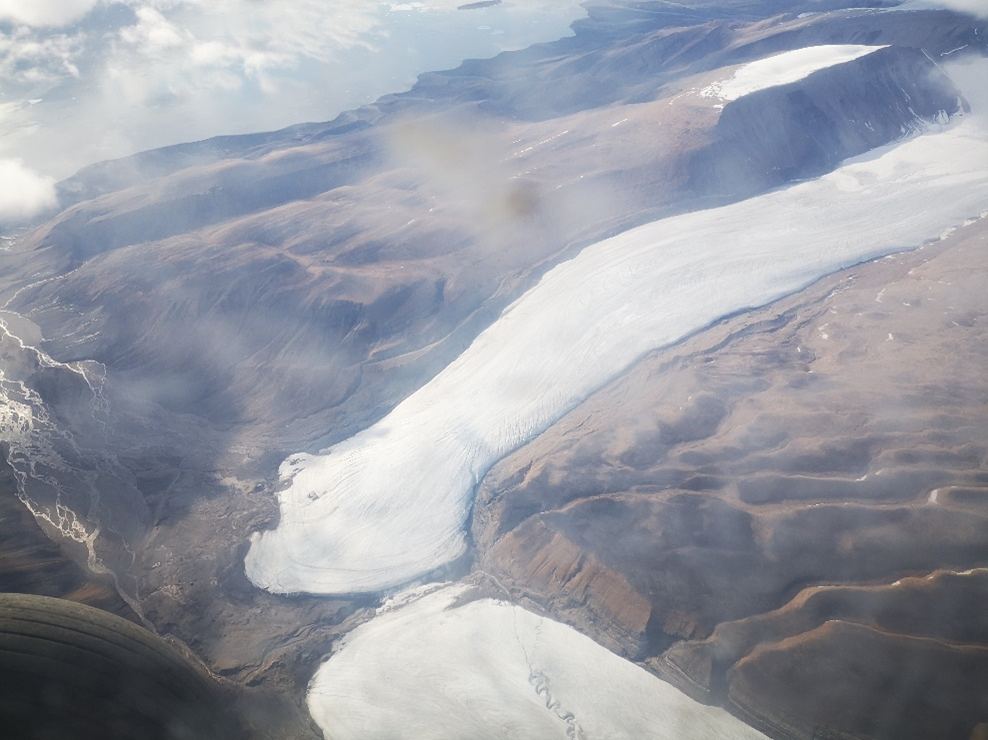Olympus Mons, located at the northwest edge of the Tharsis Montes region on Mars, was appropriately named. Based on readings obtained by the Mars Orbiter Laser Altimeter (MOLA), an instrument aboard NASA’s Mars Global Surveyor (MGS), this mountain is the tallest in the Solar System, standing 21.9 km (13.6 mi) tall – about two and a half times the height of Mount Everest (8.85 km; 5.5 mi). According to current estimates, this extinct shield volcano formed during Mars’ Hesperian Period (ca. 3.7 to 3 billion years ago), which was characterized by widespread volcanic activity and catastrophic flooding.
This coincides with a period when Mars had a denser atmosphere, a warmer environment, and flowing water on its surface. This included a global ocean that spanned much of the northern hemisphere, known today as the Northern Lowlands, encompassing Olympus Mons. According to a recent study led by researchers from the Centre National de Recherches Scientifique (CNRS), features found on the slopes of Olympus Mons indicate that it could have been a massive volcanic island where volcanic eruptions flowed into the ocean, similar to ones found on Earth.
Continue reading “Olympus Could Have Been a Giant Volcanic Island in an Ancient Martian Ocean”
